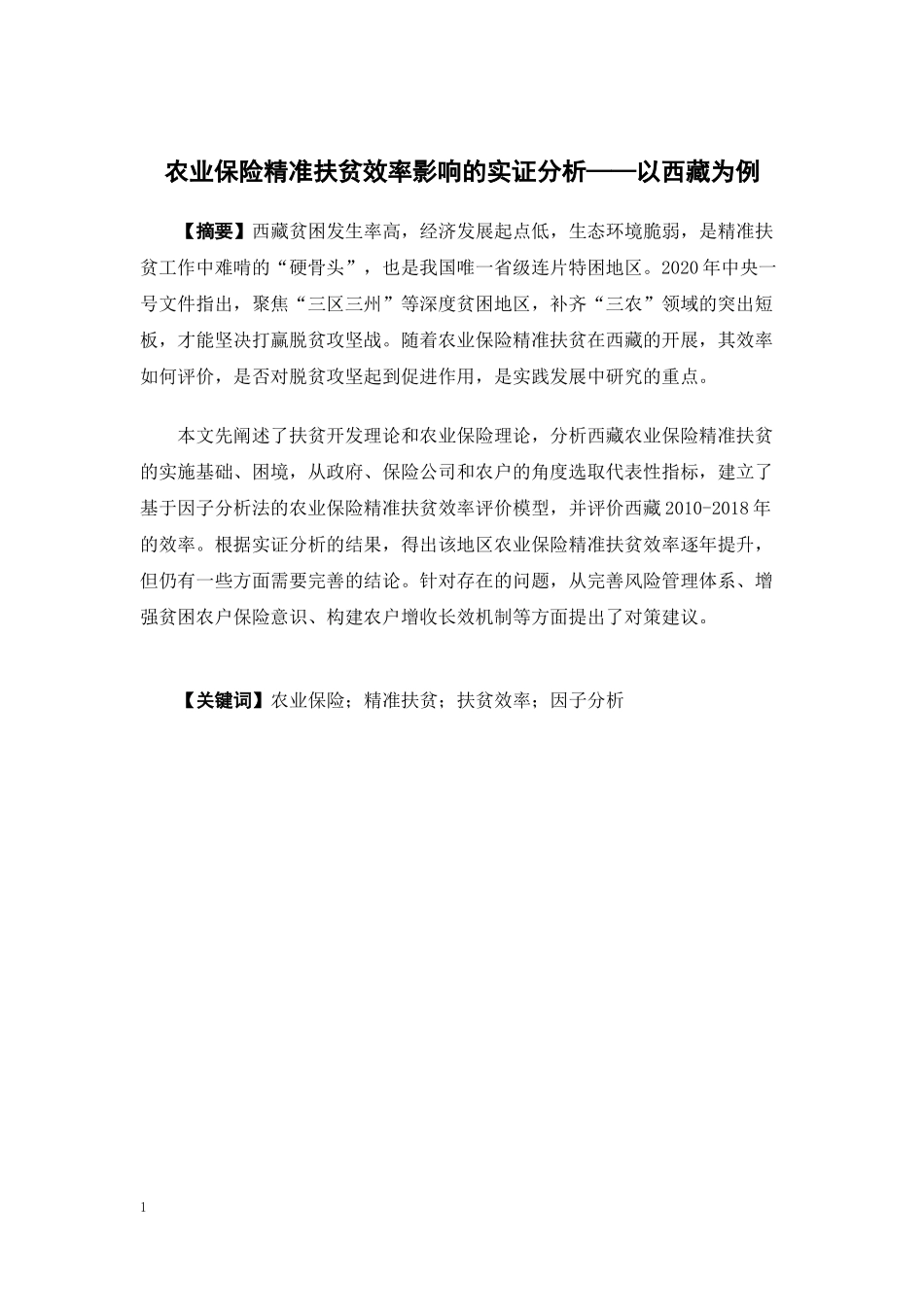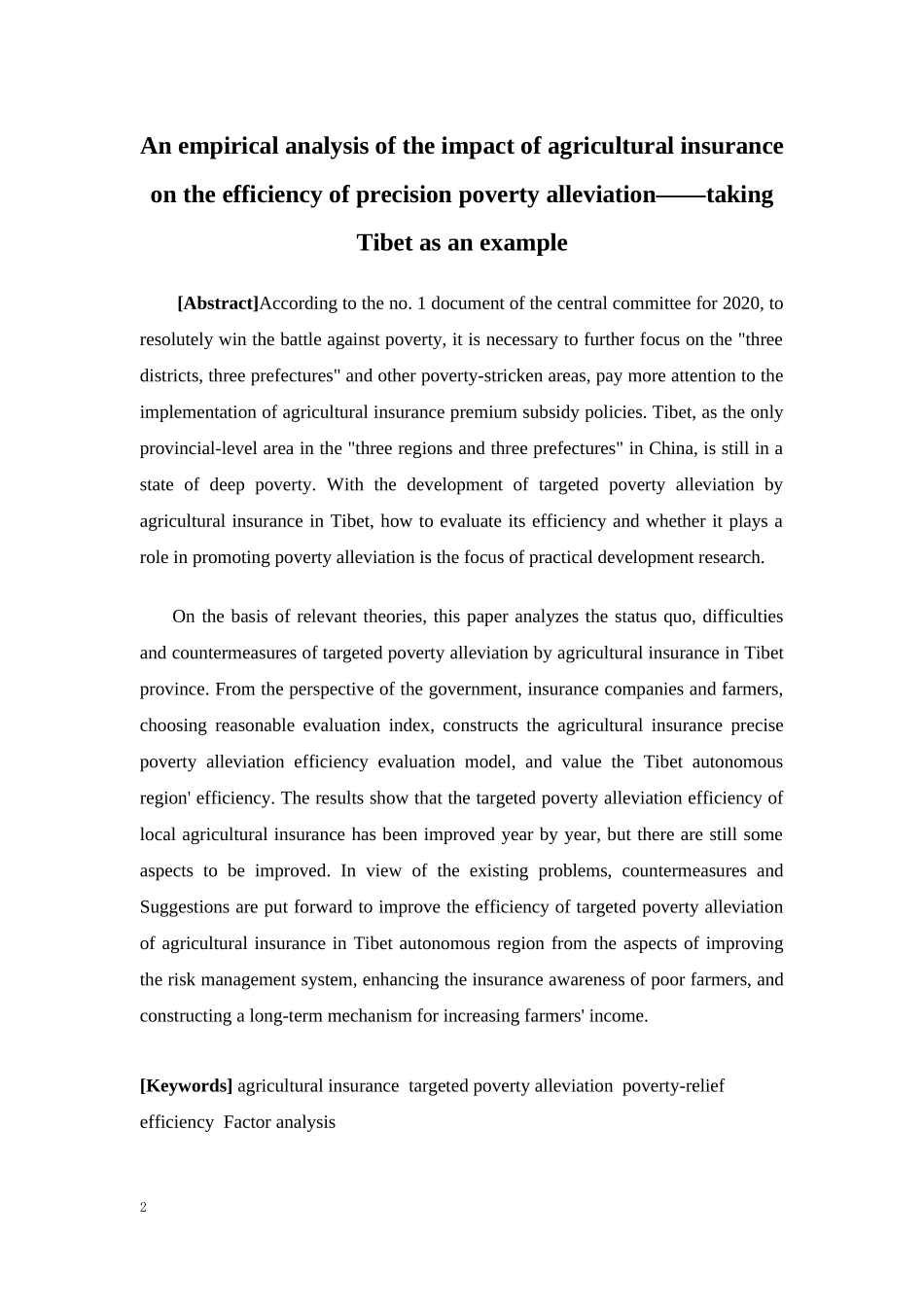农业保险精准扶贫效率影响的实证分析——以西藏为例【摘要】西藏贫困发生率高,经济发展起点低,生态环境脆弱,是精准扶贫工作中难啃的“硬骨头”,也是我国唯一省级连片特困地区。2020 年中央一号文件指出,聚焦“三区三州”等深度贫困地区,补齐“三农”领域的突出短板,才能坚决打赢脱贫攻坚战。随着农业保险精准扶贫在西藏的开展,其效率如何评价,是否对脱贫攻坚起到促进作用,是实践发展中研究的重点。本文先阐述了扶贫开发理论和农业保险理论,分析西藏农业保险精准扶贫的实施基础、困境,从政府、保险公司和农户的角度选取代表性指标,建立了基于因子分析法的农业保险精准扶贫效率评价模型,并评价西藏 2010-2018 年的效率。根据实证分析的结果,得出该地区农业保险精准扶贫效率逐年提升,但仍有一些方面需要完善的结论。针对存在的问题,从完善风险管理体系、增强贫困农户保险意识、构建农户增收长效机制等方面提出了对策建议。【关键词】农业保险;精准扶贫;扶贫效率;因子分析1An empirical analysis of the impact of agricultural insurance on the efficiency of precision poverty alleviation——taking Tibet as an example[Abstract]According to the no. 1 document of the central committee for 2020, to resolutely win the battle against poverty, it is necessary to further focus on the "three districts, three prefectures" and other poverty-stricken areas, pay more attention to the implementation of agricultural insurance premium subsidy policies. Tibet, as the only provincial-level area in the "three regions and three prefectures" in China, is still in a state of deep poverty. With the development of targeted poverty alleviation by agricultural insurance in Tibet, how to evaluate its efficiency and whether it plays a role in promoting poverty alleviation is the focus of practical development research.On the basis of relevant theories, this paper analyzes the status quo, difficulties and countermeasures of targeted poverty alleviation by agricultural insurance in Tibet province. From the...












